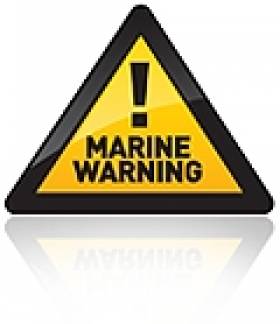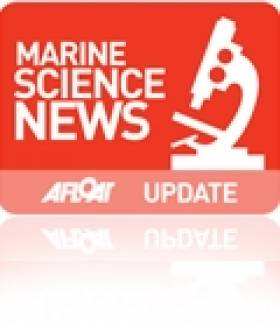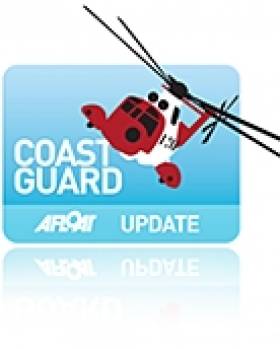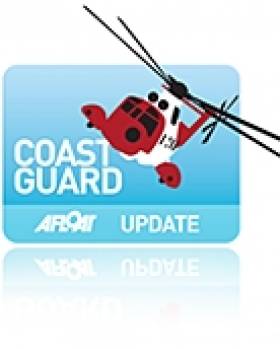Displaying items by tag: irish sea
Irish Sea Scallop Ban Raises Ire of Scots
Scottish fishermen have taken exception to a new ban on fishing for scallops in the Irish Sea around the Isle of Man.
Authorities on the island introduced the bylaw in reaction to what they perceive as dangerous levels of overfishing and are "keen to conserve and protect its scallop beds", according to The Guardian.
It has been claimed that so many undersized juveniles are fished by trawlers in the two-week season each November "that the population is being put at risk".
However, Scottish fisheries minister Richard Lochhead was quoted as describing the new measure as "unnecessary and unwarranted" and a "war" against Scots.
"There's been no scientific case to back up the bylaw that's been put in place, which blatantly just excludes Scottish vessels," he said.
2011 ISORA Race Schedule Published
ISORA has published its race schedule for 2011 and to win the overall series next year boats must complete 4 of the 6 "qualifying". Points for the overall series will then be taken from the Best 5 results from ALL the races completed.
The offshore body has also changed the scoring of each race to the High Score system and it will apply weightings for those qualifying races depending on the complexity of the race. The aim is to better reward the winner and participants of longer races with bigger fleets.
To provide opportunities for those boats who have not been winning to win prizes and trophies, it was also agreed at last weeks agm to create a "Silver" fleet in both Class 1 and Class 2. The selection of boats to enter the "Silver" fleet for 2011 will be based on their performance in 2010. The success of these new classes will depend on maintaining the number of boats entering and racing at least at last years numbers.
The NOR and Entry forms for ISORA 2011 will be published later this month.
The Race Programme is attached for download below.
Gale force westerly winds Gusting to 140km/h
Met Eireann have issued a severe weather warning.
Southerly gales or strong gales developing this evening and for a time tonight on all coasts and on the Irish Sea. Winds veering westerly tonight and continuing to reach gale force on coasts from Roches Point to Erris Head to Malin Head overnight.
Stormy conditions will affect Ireland Thursday afternoon, evening and for much of Thursday night. Gale force westerly winds will gust between 100 and 120 km/hr generally, but gusts of up to 140 km/hr are expected in exposed parts of Connacht and Ulster. These winds are likely to lead to some structural damage and will be accompanied by high seas on Atlantic coasts. Winds will moderate considerably towards dawn on Friday.
More HERE
Jellyfish Numbers On The Rise
New research by marine biologists shows that jellyfish numbers are rising in European waters - including the Irish Sea.
The BBC reports that findings set to be published in the journal Global Change Biology show that samples collected from the Irish Sea since 1970 record a significant increase of both jellyfish and coral, particularly since 1994.
Researchers suggest that changes to marine ecosystems - possibly caused by overfishing and climate change - maybe be providing an opportunity for jellyfish to propogate, due to their ability to adapt quickly to new conditions.
There is concern that this might lead to a "never-ending jellyfish joyride" which could play havoc with commercial fishing stocks.
However the scientists say more data is needed to understand exactly what is happening to cause this growth.
Black Tie Finale to ISORA Season
Irish Sea Offshore sailing Chief Peter Ryan has circulated the Notice and Agenda for next Saturday's ISORA AGM at the National Yacht Club and told Ireland's biggest band of offshore crews to wear dinner jackets so they can vote on next year's sailing, watch Ireland play South Africa and attend the formal ISORA prize giving dinner all at the same waterfront venue.
The AGM takes place at 14.00 at the NYC. The rugby match is on at 17.30 and Ryan says if sailors are interested they can dress up in your tux and watch the match.
Immediately after the match at 19.45, the pre-dinner drinks reception will be held in the JB Room of the Dun Laoghaire club with complimentary sparkling wine and classical music by the Neptune Trio.
Dinner will be at 20.30 sharp to enable the prize giving to take place at 22.00 and finish of ceremonies by 23.00 latest. After this sailors can relax or dance the night away at the ISORA disco.
AGM papers are attached for download.
Ferry Passenger Boost Recorded for First Half of 2010
The figures reflect the disruption to the aviation industry due to the ash-cloud that erupted from the Icelandic Eyjafjallajokull volcanic mountain in April. This contributed to a large volume in passengers making alternative travel plans by booking with ferry operators.
During the week of the main closure to European air-space, ferry operators noted a three-fold increase in the demand for foot-passenger bookings throughout the main Irish Sea routes. The IMDO estimate that an additional 106,000 passengers took the ferry option compared to the same time period in 2009.
On the continental routes between Ireland to France, volumes increased 25% in the second quarter of 2010. There are three routes operated by four ferry operators. Over 30% of the passenger market is conducted within the second quarter of 2010, marking the beginning of the tourist season. Therefore any increase in passengers volumes from this time is likely to have a positive impact for the balance of the full year figures.
In the months between March to May, the increase in sea-passengers was up 14% year-on-year. While the market demand on English Channel routes, which accounts for 90% of the traffic, saw passenger numbers surge 13% in the second quarter of 2010 compared to the same timeframe of the previous year.
The largest percentage increase in traffic, was recorded at Dublin Port, during the first 6 months of 2010, where passenger volumes rose by 25%. Earlier in the year, a new entrant into the Irish Sea market, Fastnet Line re-opened the Cork-Swansea route. In 2006 the 10-hour route was closed by Swansea Cork Ferries. The new operator provides 6 sailings weekly which are likely to have resulted in a boost to passenger tourist vehicles in the south-west region.
On an all-Ireland basis there are 5 operators operating between Ireland and the UK, and 2 operators between Ireland and France providing 60 daily sailings. Irish Sea operators are Stena Line, Irish Ferries, P&O (Irish Sea), Seatruck Ferries and DFDS Seaways (formerly trading as Norfolkline) until acquired by the Danish ferry and transport logistics company. On the continental services, Irish Ferries and Celtic Link Ferries operate out of Rosslare Europort while Brittany Ferries serves the Cork-Roscoff route.
For a detailed PDF of the figures please click attachment listed below. For further information about the IMDO logon to their website: www.imdo.ie
Investigators Praise Pilot Who Ditched Into Irish Sea
The pilot of a light aircraft that ditched into the Irish Sea last year has been commended for his flying skills and quick thinking after taking the plane down safely.
John O'Shaughnessy was flying the two-seater plane from Wales to Wexford on 11 August last year when the accident occurred off Tuskar Rock, just 15 minutes away from his destination.
He executed a 'belly landing' and was spotted by a nearby ocean rowing team who came to his aid before the Coast Guard arrived.
On Wednesday (13 October) the official investigation into the incident found that engine failure was to blame and not pilot error. However, accident investigators also found that the standard pre-flight checks were not fully carried out.
The report praised O'Shaugnessy's actions in ditching the plane "despite the fact that he was not particularly familiar with the aircraft".
Investigators said that the engine failure was "probably due to fuel starvation relating to a fuel-vapour related problem". They also noted the lack of a flight plan for O'Shaughnessy's journey.
Irish Sea to Get More Super Yachts
The Irish Sea and possibly the Irish East Coast may see more super yacht traffic thanks to an Isle of Man Government initiative aimed at registering more Super yachts on the island after the Monaco Yacht Show later this month. Four government representatives are travelling to the famous tax haven in the hope of attracting more business.
The island's super-yacht industry has grown by 20% in the past year and there are currently 95 commercial yachts registered with the Manx flag.
The Isle of Man government is confident business will increase as a result of having a presence in Monaco.
Director of the Isle of Man Ship Registry Dick Welsh told the BBC: "It is difficult to quantify how much the industry is worth to the Isle of Man.
"The registration charge is £700 but then there is the technical management, crew management, chartering and insurance.
"It's a thriving industry which employs around 100 people on the Island."
More from the BBC HERE.
Welsh Coastguard Evacuate Walkers
At twenty minutes past one this afternoon, Swansea Coastguard received a call from ambulance control requesting assistance to the aid of an injured walker.
The lady had called 999 and requested the Welsh ambulance service, after they had taken the call they assessed that they would need Coastguard assistance to extract the lady from where she was. She had fallen in woods near to the Irish Sea coast and had sustained a broken ankle.
The Llantwit Major Coastguard rescue team was called out. They located the lady and placed her in their rescue stretcher and carried her out to the waiting air ambulance who then evacuated her to hospital.
Earlier in the day Swansea Coastguard received a call for assistance from the Welsh ambulance service, when a 51 year old male, part of a group of 800 coastal walkers on a fundraising walk for charity, fell and dislocated his elbow.
Rhossili Coastguard rescue team was called out and located the man. Due to the extreme pain this man was experiencing, a doctor who was attending requested that the best way to evacuate was by helicopter. A rescue helicopter was requested. The Rhosilli http://www.afloat.ie/resources/organisations/irish-coast-guard/ team cleared an area for the helicopter to work safely in the evacuation of this man.
Dai Jones, Watch Manager at Swansea said:
Our Coastguard rescue teams train for this type of recovery and we were pleased that we could assist in the rescue of these two walkers.
Coastal cliff paths are often uneven and can present a problem when walking them.
Always ensure that you are equipped for the activity you are undertaking and ensure that you are wearing adequate footwear.
Coastguard to Carry Out Irish Sea Windfarm Exercise
The UK's Maritime & Coastguard Agency in conjunction with RWE npower renewables, the RNLI and RAF Search and Rescue, are due to exercise communications, co-ordination and response to a series of mock-maritime incidents in and around the wind turbines at the North Hoyle and Rhyl Flats Offshore Wind Farms on the Irish Sea.
Rhyl Flats Offshore Wind Farm is a 25 turbine wind farm approximately 8 km north east of Llandudno in North Wales. It is Wales' second offshore wind farm and the third offshore wind farm to be built within Liverpool Bay. It has a maximum rated output of 90 MW.
The Exercise is due to take place on Sunday 5th September.
The exercise will be coordinated by Holyhead Coastguard, and involves multiple agencies, including the North Hoyle and Rhyl Flats wind farm operators, maintenance teams and a number of service vessels.
Jim Paton, Rescue Co-ordination Centre manager at Holyhead Coastguard said:
"We are very keen to practise various elements of a search and rescue within a wind farm and to test rescue and evacuation procedures for 'walking wounded' from intermediate and lower platforms of a wind farm tower. With colleagues in the RNLI we will exercise the appointment of the Rhyl RNLI all weather lifeboat as on scene co-ordinator to search the surface sea area for missing people with multiple search units employed.
"We want to be able to test procedures for the rescue and evacuation of persons from a turbine nacelle and with the RAF, test a helicopter evacuation of a casualty from the nacelle of a wind turbine. We will also be exercising winching procedures within a wind farm complex using lifeboats, a helicopter and a wind farm service vessel all working with each other. We expect the exercise to take about four (4) hours from midday to 4.00 pm."
The exercise will begin with Holyhead Coastguard receiving a call reporting a 4x4 vehicle and trailer parked in Rhyl overnight. The first informant will also explain that he had seen two people from this vehicle launching a small boat from the slipway opposite at around 8.00 pm the previous evening, and who haven't been seen since. Additionally the Coastguard will hear about the need for an individual to be airlifted from somewhere within the North Hoyle offshore wind farm .
Jim Paton continued
"As wind farms become larger and more involved; an emergency service such as the Coastguard must be fully aware of the challenges of search and rescue within such complexes when the weather and sea conditions at the time of the incident may be extremely hostile."

